Solution Highlights
- Proposed a comprehensive AI in trucking system for improving driver safety and well-being
- Anticipated road safety through fatigue monitoring, hazard detection, and predictive maintenance powered by sensors and cameras
- Expected high driver efficiency via OCR-based paperwork automation, real-time routing, and weather-aware trip planning
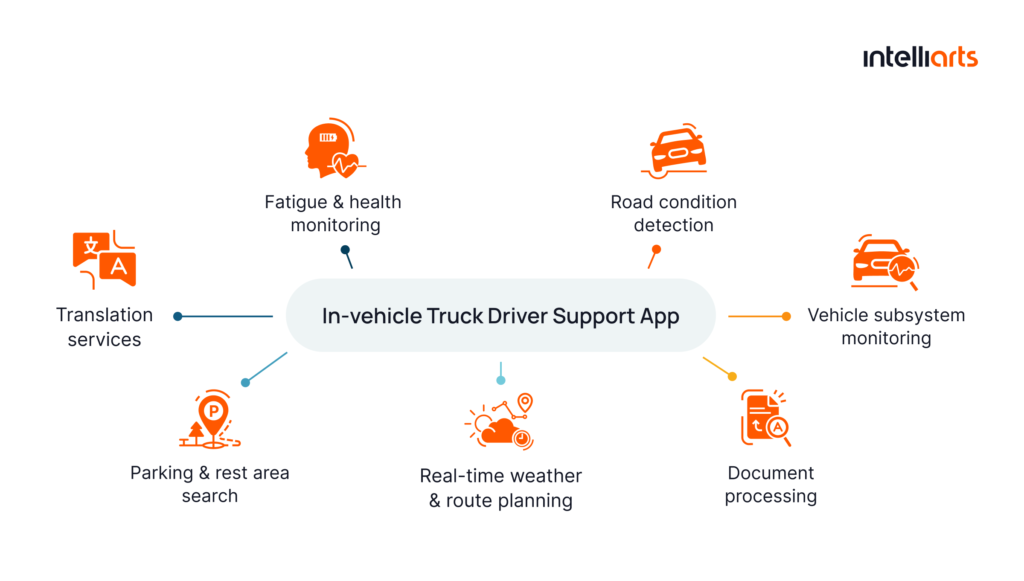
About the Project
Challenge Organizer:
Isuzu Motors, a global leader in commercial vehicles and transport solutions, launched the Isuzu Challenge. This is a program dedicated to exploring unprecedented AI methods and the value they can create for the future. The initiative is designed to find innovative AI use cases that can contribute to safer and more efficient societies.
Challenges & Project Goals:
The challenge invited participants to submit AI-driven proposals that demonstrate originality, impact, and feasibility. Our machine learning (ML) team decided to design a solution that addresses critical challenges that truck drivers face on the road, from safety concerns to communication barriers.
“Long hours, safety risks, demanding schedules, and administrative overheads can significantly affect both efficiency and driver well-being. So, our goal was to propose a solution that delivers real value to drivers and society at large.”
Volodymyr Mudryi
Data Scientists & ML Engineer @ Intelliarts
Our AI solution aimed at improving driver safety, supporting healthier work conditions, and enhancing the overall quality of life on the road. At the same time, the solution was planned to be aligned with market trends in the EU logistics sector, as one of the fastest-growing markets.
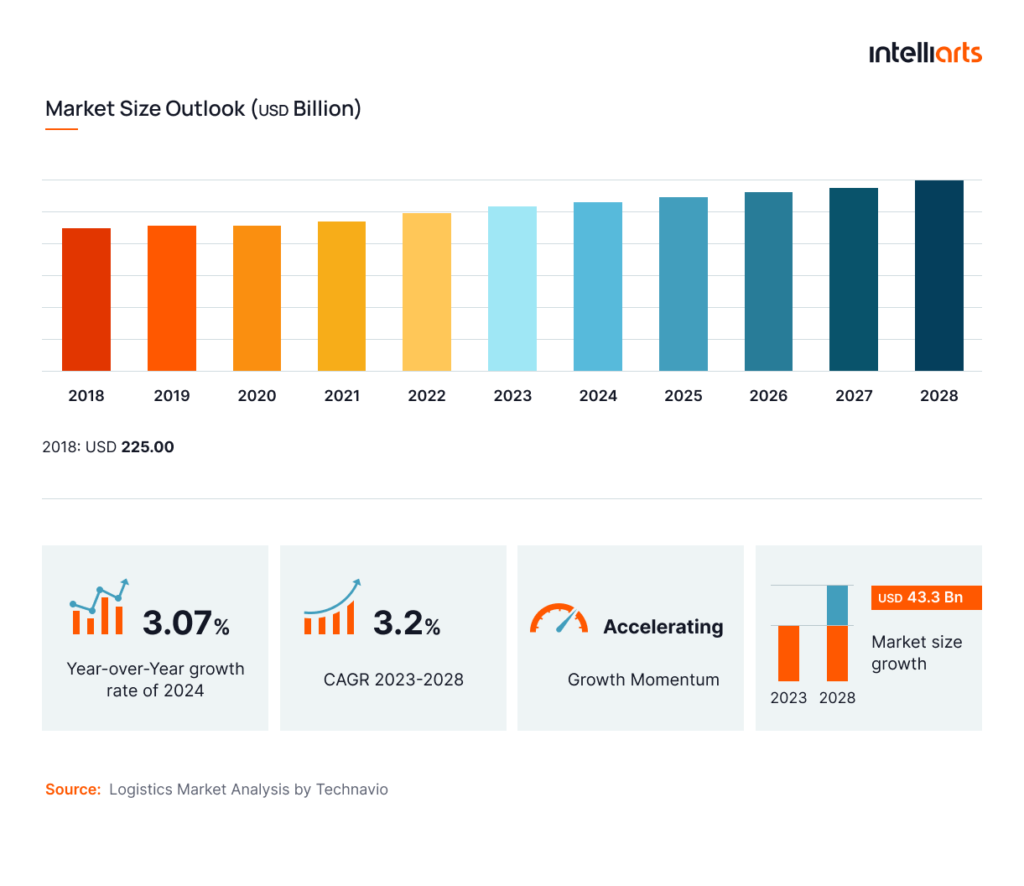
Solution:
We proposed a deeply integrated in-vehicle truck driver support system that combines both hardware (sensors and cameras) and software (multimodal AI models and supporting infrastructure) components. The AI solution is designed to monitor the driver and environment, process real-time data, and deliver situation-aware responses via audio and text channels.
Dedicated hardware modules include:
- Vehicle sensors to detect subsystem malfunctions
- Driver-facing cameras to track alertness and health
- Road-facing cameras to identify unsafe conditions and reckless driving
Software assistant integrates several functionalities aimed at enhancing the truck driver’s experience and improving efficiency on the road:
- OCR for document automation
- Real-time weather data for safer route planning
- Parking, regulation, and rest-area search
- Translation services for cross-border communication
- Driving behavior recommendations for safety and efficiency
- Vehicle state alerts for proactive maintenance
- Conversational interface for seamless interaction
ML Development, Data Analysis, LLM Development
Technology Solution
The proposed system is built as a layered architecture combining sensor networks, multimodal AI, and intelligent reasoning models to provide continuous in-vehicle support and demonstrate the potential of AI in trucking to transform logistics operations.
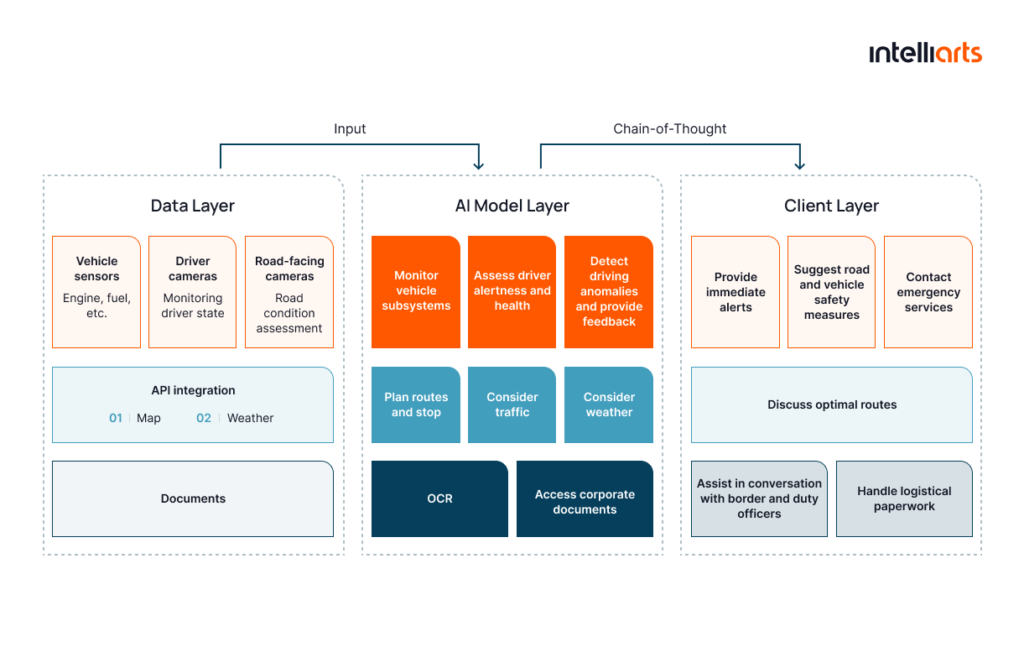
Data collection and sensor integration
The foundation of the AI driver monitoring system is real-time data ingestion from multiple sources. Vehicle subsystem sensors capture performance metrics like engine health, brake status, and fuel consumption. Driver-facing cameras apply computer vision to evaluate alertness and detect early signs of fatigue, while road-facing cameras identify hazards and unsafe driving behaviors. This sensor fusion ensures a holistic view of the driver, vehicle, and environment.
Multimodal AI and processing layer
All inputs, such as visual data, sensor streams, and text, feed into multimodal AI models. These models, powered by deep learning algorithms, are trained to understand and act upon a variety of driver needs:
- Optical Character Recognition (OCR) helps with automatic recognition and filling in forms from physical and digital documents to handle logistical paperwork and compliance documents on the go.
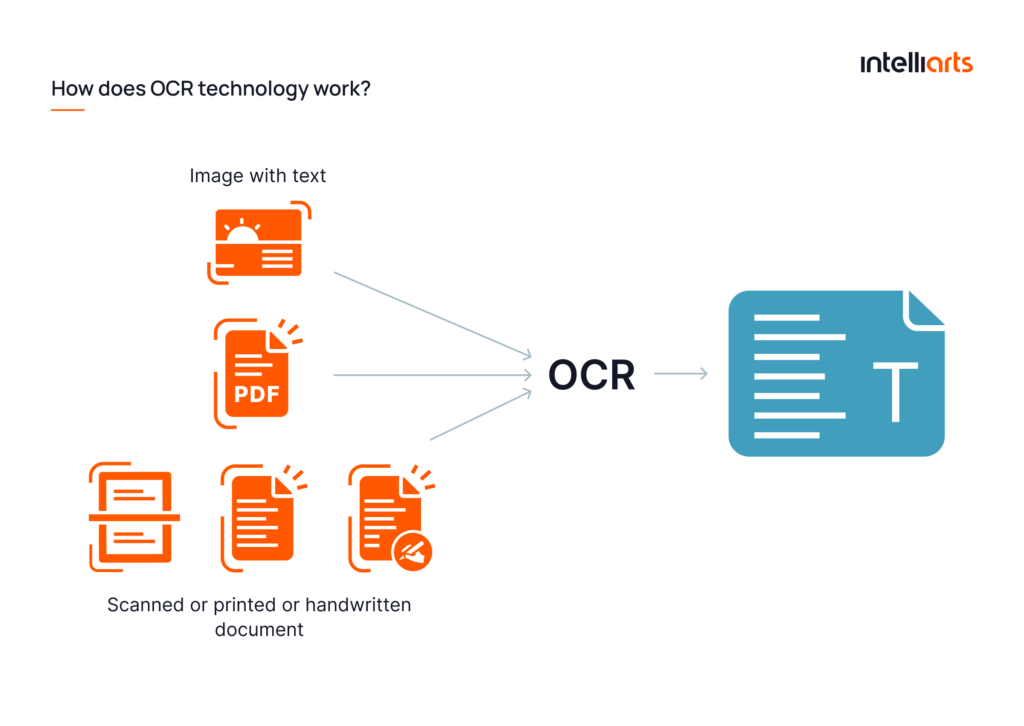
- A large language model (LLM) supports translation services for drivers who frequently interact with foreign authorities or road users. Plus, this integration provides a conversational interface, enabling drivers to interact with the system naturally to request services or insights.
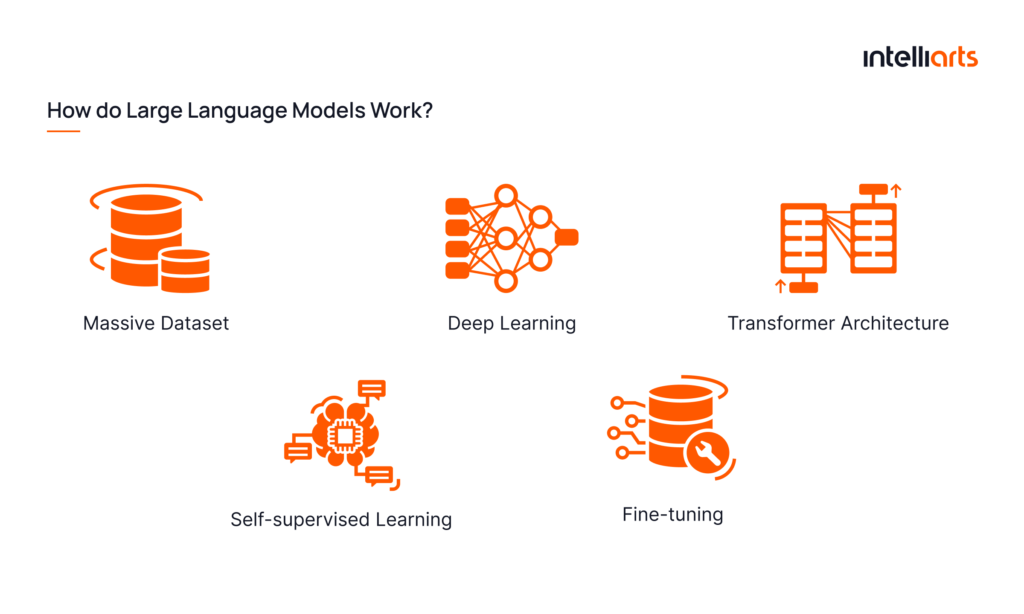
- Route and weather integration to ensure optimal route planning. The system connects to external APIs like Waze for real-time navigation and weather services. Respectively, real-time data allows drivers to make informed decisions regarding route changes, parking options, and rest stops.
Explore 15 best large language model solutions for your business in one of our articles.
Driving behavior analytics
The system also incorporates AI-driven driving behavior analytics to evaluate and improve driving performance:
- Unsupervised learning to identify anomalies or unusual driving patterns that may indicate risky behavior
- Supervised learning to score driving quality against factors like acceleration, braking, and adherence to speed limits, with models updated continuously for accuracy
Intelligent decision-making
To enhance reliability, the system applies advanced methods:
- Chain-of-thought reasoning is integrated to assist with decision-making processes. For example, when a driver requests route guidance, the model processes a series of factors (weather, traffic, vehicle state, rest areas) step-by-step before presenting a decision, enhancing the accuracy and reliability of suggestions.
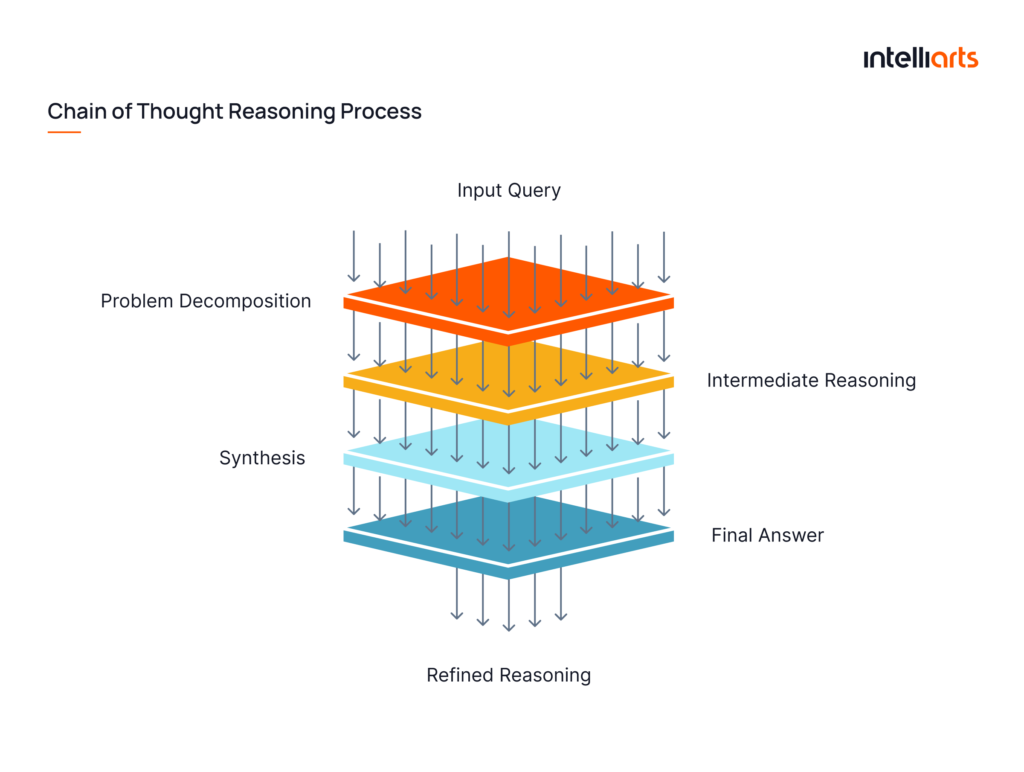
- Retrieval-Augmented Generation (RAG) connects to external knowledge bases such as road regulations and vehicle manuals, enabling the system to answer driver queries with context-specific guidance.
Vehicle state alerts and predictive maintenance
ML models analyze continuous sensor data to detect trends and anticipate failures. This way, the system will issue real-time alerts for immediate problems and also provide predictive maintenance recommendations, reducing downtime and enhancing fleet reliability.
All in all, by combining hardware sensors, multimodal AI, external API integration, and cutting-edge ML techniques, the proposed AI solution can provide a seamless, intelligent, and responsive in-vehicle support experience for truck drivers.
Business Outcomes
Our proposed AI logistics solution demonstrates how AI in trucking can transform the trucking experience, addressing both driver well-being and operational efficiency in the logistics sector. By integrating safety monitoring, predictive analytics, and intelligent automation into a single platform, the solution creates measurable value for drivers, logistics companies, and society as a whole.
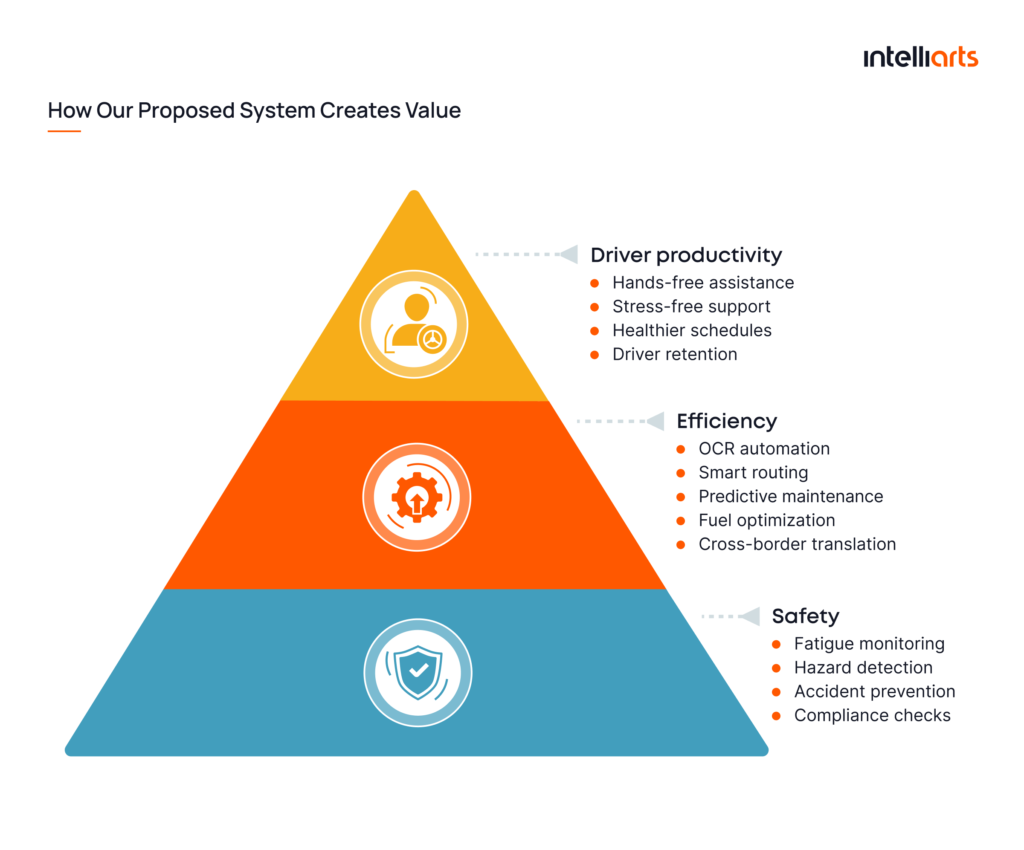
Key benefits include:
- Enhanced safety: Fatigue contributes to 10-25% of serious road accidents in Europe. The driver-facing cameras can monitor the driver’s alertness and health condition, so the system will provide proactive alerts to mitigate potential accidents caused by drowsiness or distraction. By combining road-facing cameras and AI-powered recognition, the AI truck driver assistance system can also detect unsafe road conditions. This way, we project to reduce fatigue-related crashes by 20-30% in fleets based on the study of telematics in professional fleets.
- Reduced downtime: Continuous vehicle subsystem monitoring prevents costly breakdowns through real-time alerts and predictive maintenance. According to the latest studies, predictive maintenance for trucks is able to reduce fleet downtime by up to 50% and equipment failure rates by up to 60%.
- Operational efficiency: Automated document processing with OCR streamlines compliance and logistics paperwork, saving drivers valuable time and acting as a key driver in the AI in trucking industry.
- Communication and language barriers: Built-in translation services eliminate language barriers in cross-border operations, ensuring smoother operations.
- Smarter decision-making: Real-time weather, parking, and routing insights support more reliable trip planning and execution.
What sets our AI solution apart is its all-in-one approach. While many existing systems focus only on safety or navigation, our proposed software brings together safety monitoring, administrative automation, predictive maintenance, and real-time assistance into a single, hands-free platform.
By combining intelligent data integration with hands-free operation, the system elevates both driver experience and fleet productivity, positioning it as a forward-looking AI in trucking solution for the rapidly growing EU logistics market.








